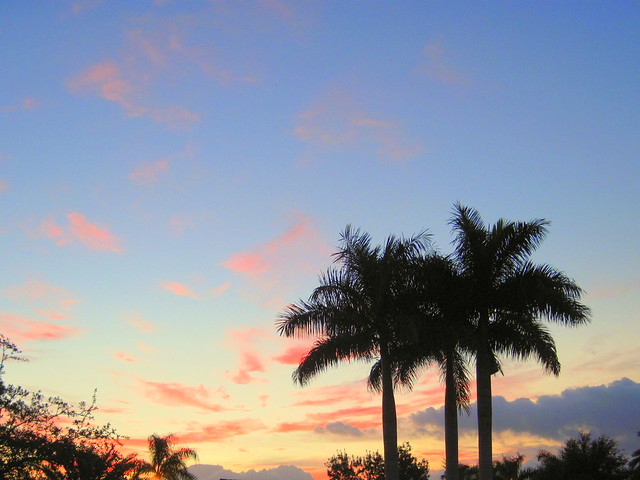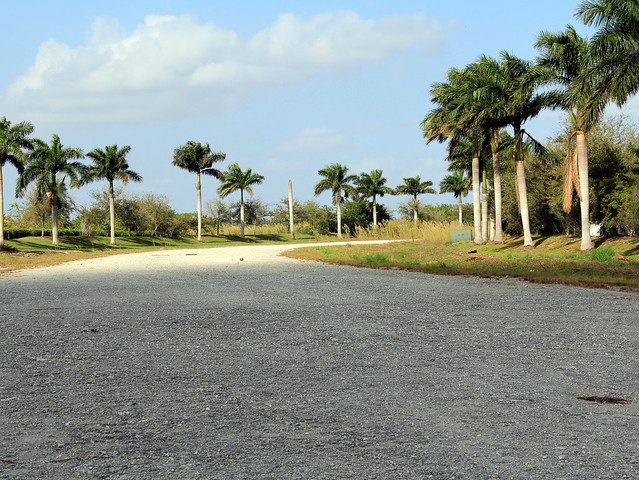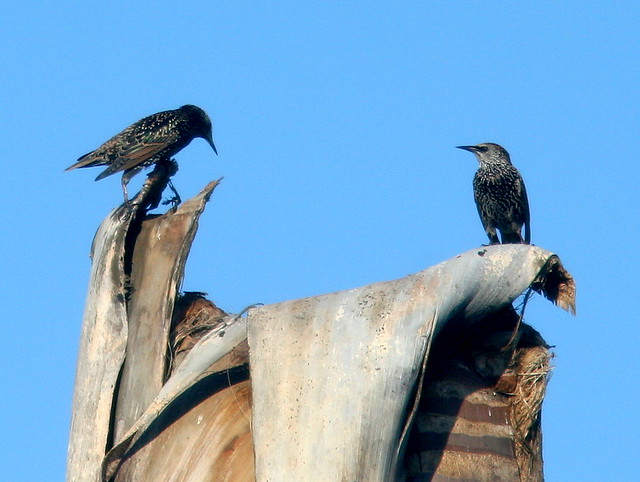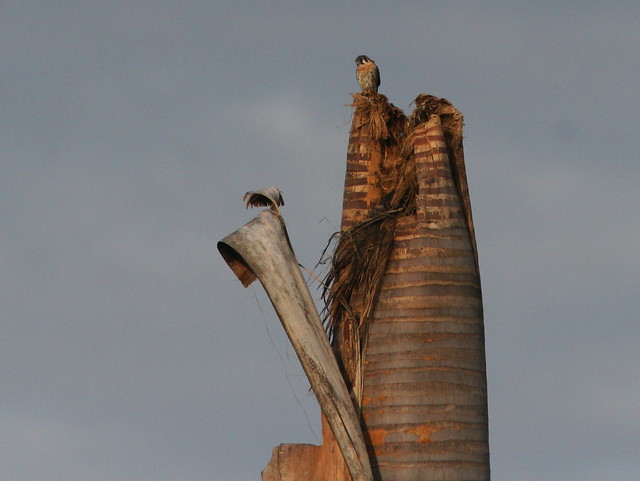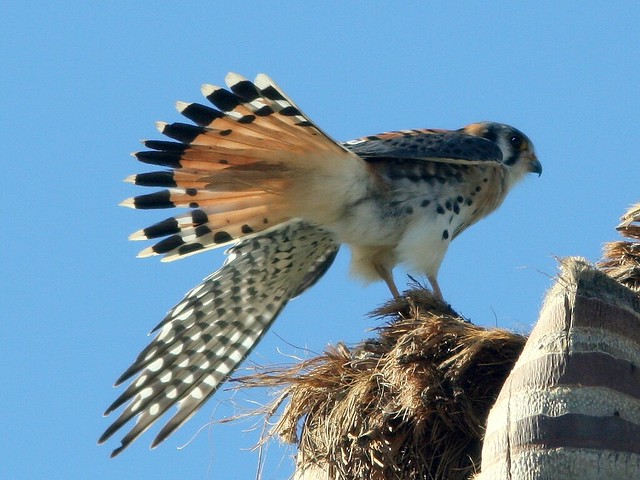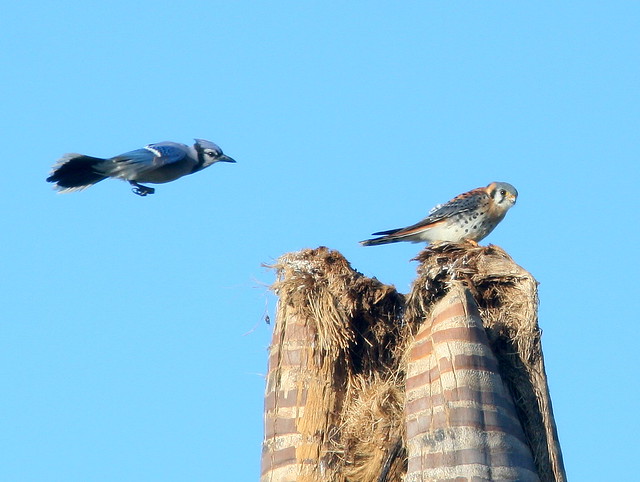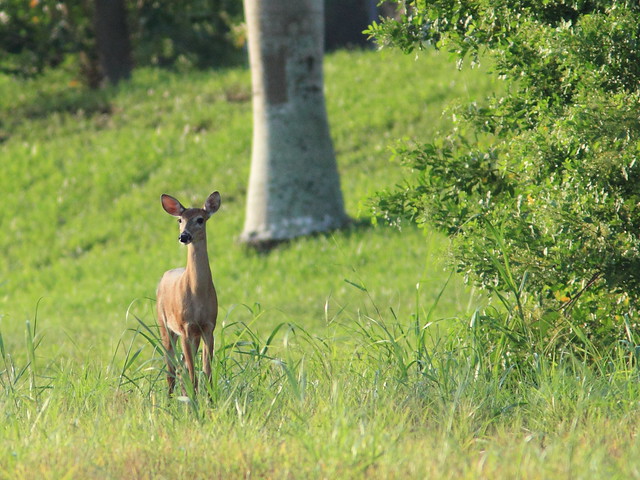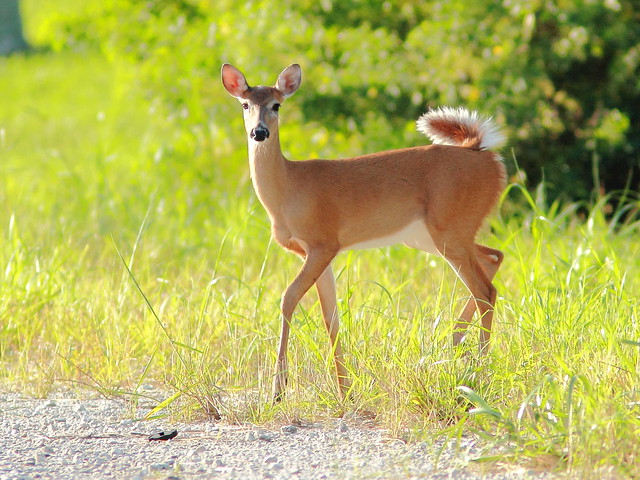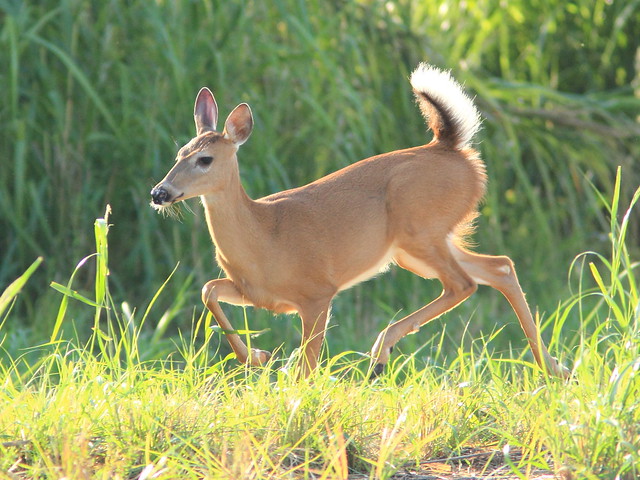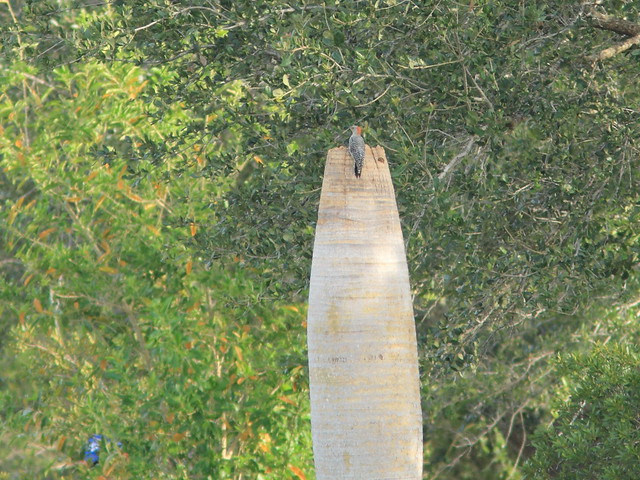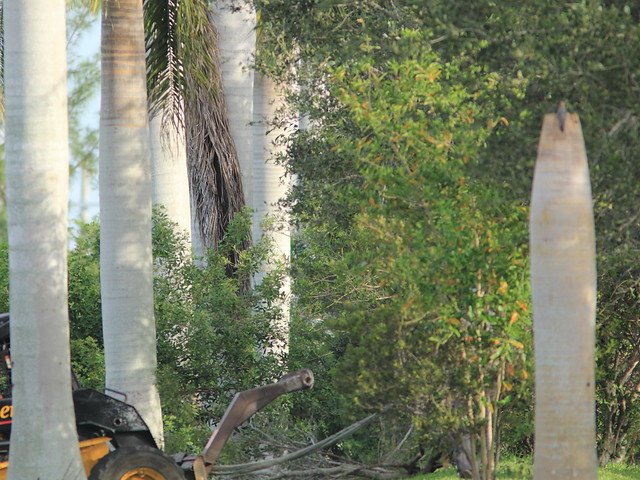Posted by: Ken @ 8:02 am
The Royal Palm is often acclaimed to be the most attractive palm tree in the world. Reaching up to a hundred feet in height, it inspires descriptors such as majestic and indeed, aristocratic. Native to southern Florida, the Caribbean and parts of Mexico and Central America, it is remarkably resistant to hurricane force winds. Their leaves release easily in strong winds, which helps keep them from being blown down. Their trunks widen to adult size before they start to grow upward, about a foot every year. Like the tree rings of woody trees, variations in diameter of their trunks provide a record of years in which they may have been stressed by drought or disease, bulging out in good years and narrowing down in years when growing conditions were poor.
What is wrong with this picture? Look closely at the next photo of the closed and unpaved section of roadway that leads into the water conservation area next to our Florida subdivision. To the eye of the landscape designer, this scene is terribly defaced by the topless palm trunk just past the curve. The human mind seems to crave symmetry and order. A dead tree disturbs that order.
Funding and logistical issues have delayed completion of this road, which will one day become a major thoroughfare connecting I-75 with US-27. For more than a dozen years, these Royal Palms along the roadside berm have withstood several hurricanes, standing tall even after winds stripped off nearly all their leaves. They endured the brutal cold of two especially bad winters, when the mercury dropped into the low 30s. About three years ago, the fronds of this particular tree began turning brown and failed to thrust up a central shoot. For the past two years it has stood, de-crowned and lifeless.
But oh, that tree was so beautiful to the eye of a flicker that drilled into its soft core and made it a home for one summer.
In the fall, starlings took over from the flicker…
…until a kestrel showed up and became master of the property for a whole winter.
The kestrel liked to sit on the front porch of the old woodpecker hole.
The kestrel felt right at home, stretching his wings in the early morning light.
Blue Jays were never happy about their new neighbor, and they worried the kestrel endlessly.
Last month, a little yearling doe walked right by the tree and its transient tenants without noticing how out of place it looked, with its scarred trunk and missing greenery.
She pranced across the street in front of me, spirited and full of life…
…and sprinted past me, down the other side of the road.
This week I found the nest tree, shattered and pinned down by its young successor.
Across the street, awaiting its fate, another topless tree hosted a Red-bellied Woodpecker.
The woodpecker did not budge as the bobcat tractor moved in to do what it had to do.
Why should it bother me? It was only an old dead tree.













